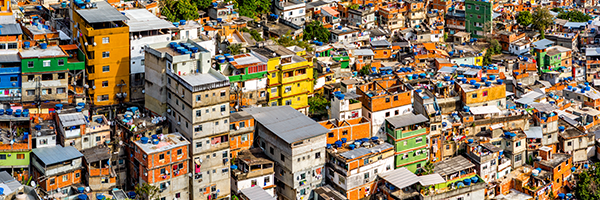As of the close on April 24, the iShares MSCI Brazil Capped ETF (EWZ) was down 7.71% today to $22.15.
Brazil is facing an intertwined crisis as a president who has called the coronavirus pandemic a “fantasy” also struggles with a political crisis that threatens his ability to govern. And perhaps even to stay in office.
First, the virus. Brazil, Latin America’s largest country, is testing people at the lowest rate of any country with 40,000 cases or more. It tests 12 times fewer people than Iran. 32 times fewer than the United States, itself not a high water mark in testing. Patients in hospitals aren’t being tested. People are dying at home without being tested.
The official count says that 37,300 people have been hospitalized this year with respiratory ailments. That’s four times the number at this point last year. Only half have received test results. Brazil’s poorest communities are severely underserved with hospitals or doctors. In Sao Paulo nearly 1,300 people have died of unidentified respiratory problems compared with 50 people last year. The state of Amazonas has reported only 193 deaths from the coronavirus, but its capital city is digging trenches for mass graves.
Researchers at the Federal University of Minas Gerais have suggested Brazil has eight times more coronavirus cases than the official numbers indicate. A research team at the University of São Paulo thinks it has 16 times more—as many as 711,000 cases.
And the government of President Jair Bolsonaro continues to argue that it’s just a little flu, and the president has recently said that the numbers look “like the virus is started to leave.”
This is the same president who fired his health minister Luis Henrique Mandetta for repeatedly contradicting the president’s description of the crisis.
And today President Bolsonaro has turned a festering political crisis into a catastrophe by forcing the resignation of Brazil’s justice minister, Sergio Moro, a former federal judge. Moro, who was the face of a powerful anti-corruption crackdown in Brazil, resigned after accusing Bolsonaro of seeking to assert improper control of the federal police for political gain. Moro gave a detailed account of a conversation with Bolsonaro in which the president said he should fire Maurício Valeixo the head of the federal police because Bolsonaro wanted a police chief he could call directly and on whom he could count to obtain sensitive investigative information and intelligence dossiers. Several of the president’s allies–including two of his sons–are under criminal investigation by federal prosecutors and the Supreme Court. Moro, one of Brazil’s most popular politicians, is the eighth minister to leave Bolsonaro’s cabinet during the 15 months he has been in office. He was widely seen as the face of the Car Wash investigation that put former president Luis Ignacio Lula da Silva in prison.
“I cannot stay on without being able to preserve the autonomy of the federal police,” Moro said. Failing to resign, he added, “would signal agreement with interference in the federal police that stands to have unpredictable consequences.” Bolsonaro had been elected on a platform to strengthen Brazil’s fight against corruption and embrace free market reforms. Moro’s position as justice minister was seen as a guarantee of that promise to fight corruption.
Bolsonaro already faced calls for his impeachment over accusations that he was using his office to shield his sons from investigation.
Now Brazil heads into a public health crisis of unknown dimensions with a severely weakened president who denies the existence of the crisis.
I bought Put Options on the iShares Brazil ETF (EWZ) in my Volatility Portfolio on my paid subscription sites JubakAM.com and JugglilngWithKnives.com as a bet that things will get worse in Brazil’s financial markets and economy before they get better on April 6. The Put (EWZ200918P00023000) purchased at $3.20 on April 6 traded at $4.00 today with the gain today of 50.94% on Brazil’s troubles. The strike price on the Put Option is $23 and the expiration date is September 18, 2020. The ETF closed at $22.15 today having broken below the 20-day moving average at $24.22 and the 50-day moving average at $29.67. The ETF is closing in on the bottom of its 52-week range of $20.14 5o $48.48. It is hard to tell how far to ride this Put on the downtrend, but the $20.15 52-week low is a target to keep in mind.
Full disclose: I own Put Options on the ETF with that September 18 expiration and the $23 strike that I purchased after I added this position to the Volatility Portfolio.


